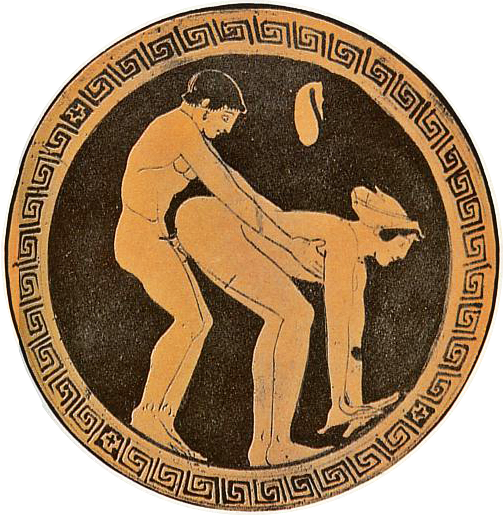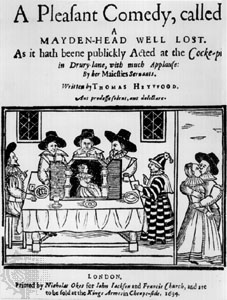|
Philaenis
Philaenis of Samos was supposedly the author of a famous ancient sex manual. According to a surviving fragment of a treatise which claims to have been written by her, she was from Samos, and her father was called Ocymenes. However, many modern scholars consider "Philaenis" a fictional character whose ''persona'' may have been adopted by a variety of erotic writers. Two satirical Greek epigrams from the ''Palatine Anthology'' by the poets Aeschrion of Samos and Dioscorides purport to defend Philaenis's reputation by insisting that she did not write the treatise attributed to her. Aeschrion instead insists that the treatise was written by the Athenian sophist Polycrates. The reputed writings of Philaenis were well known throughout classical antiquity and scholars believe that they may have influenced Ovid's '' Ars Amatoria''. In later times, Philaenis was remembered for her reputation of licentiousness. A fictional character named Philaenis appears in the '' Epigrams'' of the Rom ... [...More Info...] [...Related Items...] OR: [Wikipedia] [Google] [Baidu] |
Sexual Position
A sex position is a position of the body that people use for sexual intercourse or other sexual activities. Sexual acts are generally described by the positions the participants adopt in order to perform those acts. Though sexual intercourse generally involves penetration of the body of one person by another, sex positions commonly involve penetrative or non-penetrative sexual activities. Three categories of sexual intercourse are commonly practiced: vaginal intercourse (involving vaginal penetration), anal penetration, and oral sex (especially mouth-on-genital stimulation). Sex acts may also involve other forms of genital stimulation, such as solo or mutual masturbation, which may involve rubbing or penetration by the use of fingers or hands or by a device (sex toy), such as a dildo or vibrator. The act may also involve anilingus. There are numerous sex positions that participants may adopt in any of these types of sexual intercourse or acts; some authors have argued th ... [...More Info...] [...Related Items...] OR: [Wikipedia] [Google] [Baidu] |
Polycrates (sophist)
Polycrates (c.440-370 B.C.) was a sophist of Athens, who later retired to Cyprus. Works He wrote a work variously titled (here given as), ''The Indictment of Socrates'', thought written sometime during the 390's B.C. and also works, according to one source lauding, to another condemning, the individual Clytaemnestra, who was known to have murdered her husband, and Busiris (Greek mythology), Busiris who killed and ate his guests. In addition to this verses on cooking pots, mice, counters, pebbles and salt. The poet Aeschrion of Samos also claimed that Polycrates was the author of the sex manual traditionally attributed to Philaenis of Samos. References {{Authority control 4th-century BC writers 4th-century BC Greek people Ancient Athenians ... [...More Info...] [...Related Items...] OR: [Wikipedia] [Google] [Baidu] |
Samos
Samos (, also ; el, Σάμος ) is a Greek island in the eastern Aegean Sea, south of Chios, north of Patmos and the Dodecanese, and off the coast of western Turkey, from which it is separated by the -wide Mycale Strait. It is also a separate regional unit of the North Aegean region. In ancient times, Samos was an especially rich and powerful city-state, particularly known for its vineyards and wine production. It is home to Pythagoreion and the Heraion of Samos, a UNESCO World Heritage Site that includes the Eupalinian aqueduct, a marvel of ancient engineering. Samos is the birthplace of the Greek philosopher and mathematician Pythagoras, after whom the Pythagorean theorem is named, the philosophers Melissus of Samos and Epicurus, and the astronomer Aristarchus of Samos, the first known individual to propose that the Earth revolves around the sun. Samian wine was well known in antiquity and is still produced on the island. The island was governed by the semi- ... [...More Info...] [...Related Items...] OR: [Wikipedia] [Google] [Baidu] |
Aeschrion Of Samos
Aeschrion (ancient Greek, Gr. ) was an Iambus (genre), iambic poet, and a native of Samos Island, Samos. He is mentioned by Athenaeus, who has preserved some choliambic verses of his, in which he defends the Samian Philaenis, claiming that the popular sex manual attributed to her was really written by Polycrates (sophist), Polycrates, an Athenian rhetorician and sophism, sophist. Some of his verses are also quoted by John Tzetzes, Tzetzes. There was an epic poet of the same name, who was called a native of Mytilene and a pupil of Aristotle, and who is said to have accompanied Alexander the Great on some of his expeditions. He is mentioned in the ''Suda'', and also by John Tzetzes, Tzetzes.John Tzetzes, ''Chil.'' viii. 406 As he was also a writer of Iambus (genre), iambics and choliambics, many scholars have supposed him to be identical with the Aeschrion from Samos, and to have been called a Mytilenaean in consequence of having resided for some time in that city. References [...More Info...] [...Related Items...] OR: [Wikipedia] [Google] [Baidu] |
Amores (Lucian)
The ''Erōtes'' ( grc-gre, Ἔρωτες; "Loves", or "The two kinds of love"), also known as the ''Amores'' or ''Affairs of the Heart'', is a dialogue written in the Roman Empire in Ancient Greek. It is an example of contest literature, comparing the love of women and the love of boys, and concluding that the latter is preferable over the former. The dialogue is traditionally attributed to the satirist Lucian and was transmitted as part of the corpus of his writings. Beginning in the early 20th century, some modern scholars have stated that the dialogue was probably not written by Lucian on account of its style, but others—including among those who do not vouch for its authenticity—have posited that the style resembles that of Lucian. As such, the work is normally cited under the name of ''Pseudo-Lucian'', but acceptance of its authenticity has increased in the 2010s. The ''Erōtes'' is also famous for its vivid description of the Cnidian Aphrodite of Praxiteles. The same sub ... [...More Info...] [...Related Items...] OR: [Wikipedia] [Google] [Baidu] |
2011 Dimos Samou
Eleven or 11 may refer to: * 11 (number), the natural number following 10 and preceding 12 * one of the years 11 BC, AD 11, 1911, 2011, or any year ending in 11 Literature * ''Eleven'' (novel), a 2006 novel by British author David Llewellyn *''Eleven'', a 1970 collection of short stories by Patricia Highsmith *''Eleven'', a 2004 children's novel in The Winnie Years by Lauren Myracle *''Eleven'', a 2008 children's novel by Patricia Reilly Giff *''Eleven'', a short story by Sandra Cisneros Music *Eleven (band), an American rock band * Eleven: A Music Company, an Australian record label *Up to eleven, an idiom from popular culture, coined in the movie ''This Is Spinal Tap'' Albums * ''11'' (The Smithereens album), 1989 * ''11'' (Ua album), 1996 * ''11'' (Bryan Adams album), 2008 * ''11'' (Sault album), 2022 * ''Eleven'' (Harry Connick, Jr. album), 1992 * ''Eleven'' (22-Pistepirkko album), 1998 * ''Eleven'' (Sugarcult album), 1999 * ''Eleven'' (B'z album), 2000 * ''Eleven'' (Reamo ... [...More Info...] [...Related Items...] OR: [Wikipedia] [Google] [Baidu] |
Thomas Heywood
Thomas Heywood (early 1570s – 16 August 1641) was an English playwright, actor, and author. His main contributions were to late Elizabethan and early Jacobean theatre. He is best known for his masterpiece '' A Woman Killed with Kindness'', a domestic tragedy, which was first performed in 1603 at the Rose Theatre by the Worcester's Men company. He was a prolific writer, claiming to have had "an entire hand or at least a maine finger in two hundred and twenty plays", although only a fraction of his work has survived. Early years Few details of Heywood's life have been documented with certainty. Most references indicate that the county of his birth was most likely Lincolnshire, while the year has been variously given as 1570, 1573, 1574 and 1575. It has been speculated that his father was a country parson and that he was related to the half-century-earlier dramatist John Heywood, whose death year is, again, uncertain, but indicated as having occurred not earlier than 1575 an ... [...More Info...] [...Related Items...] OR: [Wikipedia] [Google] [Baidu] |
John Donne
John Donne ( ; 22 January 1572 – 31 March 1631) was an English poet, scholar, soldier and secretary born into a recusant family, who later became a cleric in the Church of England. Under royal patronage, he was made Dean of St Paul's Cathedral in London (1621–1631). He is considered the preeminent representative of the metaphysical poets. His poetical works are noted for their metaphorical and sensual style and include sonnets, love poems, religious poems, Latin translations, epigrams, elegies, songs and satires. He is also known for his sermons. Donne's style is characterised by abrupt openings and various paradoxes, ironies and dislocations. These features, along with his frequent dramatic or everyday speech rhythms, his tense syntax and his tough eloquence, were both a reaction against the smoothness of conventional Elizabethan poetry and an adaptation into English of European baroque and mannerist techniques. His early career was marked by poetry that bore immense ... [...More Info...] [...Related Items...] OR: [Wikipedia] [Google] [Baidu] |
Oxyrhynchus
Oxyrhynchus (; grc-gre, Ὀξύρρυγχος, Oxýrrhynchos, sharp-nosed; ancient Egyptian ''Pr-Medjed''; cop, or , ''Pemdje''; ar, البهنسا, ''Al-Bahnasa'') is a city in Middle Egypt located about 160 km south-southwest of Cairo in Minya Governorate. It is also an archaeological site, considered one of the most important ever discovered. Since the late 19th century, the area around Oxyrhynchus has been excavated almost continually, yielding an enormous collection of papyrus texts dating from the Ptolemaic Kingdom and Roman Egypt. They also include a few vellum manuscripts, and more recent Arabic manuscripts on paper (for example, the medieval P. Oxy. VI 1006) History Ancient Egyptian Era Oxyrhynchus lies west of the main course of the Nile on the Bahr Yussef, a branch that terminates in Lake Moeris and the Faiyum oasis. In ancient Egyptian times, there was a city on the site called Per-Medjed, named after the medjed, a species of elephantfish of th ... [...More Info...] [...Related Items...] OR: [Wikipedia] [Google] [Baidu] |
Oxyrhynchus Papyri
The Oxyrhynchus Papyri are a group of manuscripts discovered during the late nineteenth and early twentieth centuries by papyrology, papyrologists Bernard Pyne Grenfell and Arthur Surridge Hunt at an ancient Landfill, rubbish dump near Oxyrhynchus in Egypt (, modern ''el-Bahnasa''). The manuscripts date from the time of the Ptolemaic Kingdom, Ptolemaic (3rd century BC) and Roman Empire, Roman periods of Egyptian history (from Final War of the Roman Republic, 32 BC to the Muslim conquest of Egypt in 640 AD). Only an estimated 10% are literary in nature. Most of the papyri found seem to consist mainly of public and private documents: codes, edicts, civil registration, registers, official correspondence, census-returns, tax-assessments, petitions, court of record, court-records, sales, leases, last will and testament, wills, bill (law), bills, Account (bookkeeping), accounts, inventories, horoscopes, and private letters. Although most of the papyri were written in Greek language, ... [...More Info...] [...Related Items...] OR: [Wikipedia] [Google] [Baidu] |
Athenaeus
Athenaeus of Naucratis (; grc, Ἀθήναιος ὁ Nαυκρατίτης or Nαυκράτιος, ''Athēnaios Naukratitēs'' or ''Naukratios''; la, Athenaeus Naucratita) was a Greek rhetorician and grammarian, flourishing about the end of the 2nd and beginning of the 3rd century AD. The '' Suda'' says only that he lived in the times of Marcus Aurelius, but the contempt with which he speaks of Commodus, who died in 192, shows that he survived that emperor. He was a contemporary of Adrantus. Several of his publications are lost, but the fifteen-volume '' Deipnosophistae'' mostly survives. Publications Athenaeus himself states that he was the author of a treatise on the ''thratta'', a kind of fish mentioned by Archippus and other comic poets, and of a history of the Syrian kings. Both works are lost. The ''Deipnosophistae'' The '' Deipnosophistae'', which means "dinner-table philosophers", survives in fifteen books. The first two books, and parts of the third, eleventh a ... [...More Info...] [...Related Items...] OR: [Wikipedia] [Google] [Baidu] |






